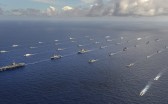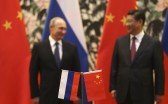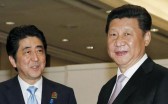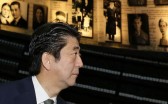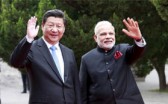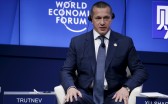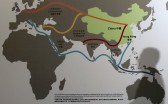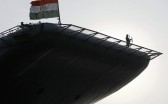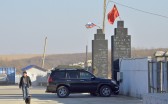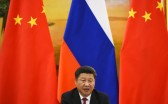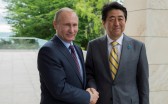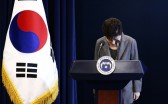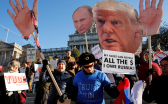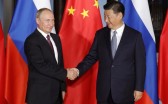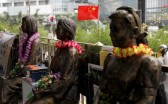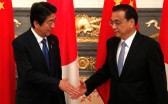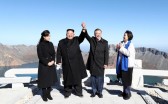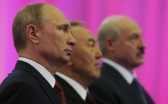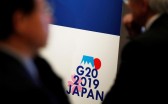After North Korea’s sixth and most-powerful nuclear test last September, few would have expected to see President Moon Jae-in step off a plane to embrace Chairman Kim Jong-un on the tarmac at Pyongyang International Airport. Moon’s efforts to include North Korea in the Pyeongchang Winter Olympics catalyzed fast-paced shuttle diplomacy that has extended beyond the Korean Peninsula via North Korea’s engagements with the United States and China. The continuous pace of diplomacy has paid real dividends for the reduction of tensions on the peninsula in the short-term, but over the long-term, Moon’s inter-Korean detente strategy will be tested as the details of agreements made thus far are negotiated and implemented. While the two Koreas continue to grow closer and establish confidence building measures (CBMS), three major obstacles must be considered: the impact of negotiations on South Korean security; the competing priorities of the United States, China, and the two Koreas; and South Korean domestic politics. Each of these alone threatens to derail progress towards peace, end inter-Korean engagement, and drive a return to hostilities.
The Impact of Negotiations on South Korean Security
For the moment, the declared goals of the two Koreas appear well-aligned. Moon has defined three goals for inter-Korean relations: 1) “resolution of the North Korean nuclear issue and establishment of permanent peace,” 2) “development of sustainable inter-Korean relations,” and 3) “realization of a new economic community on the Korean Peninsula.”1 Toward these objectives, the two countries promised in the April Panmunjom Agreement to “cooperate to establish a permanent and solid peace regime on the Korean Peninsula” and share a “common goal of realizing, through complete denuclearization, a nuclear-free Korean Peninsula.”2 Moon’s cabinet has also supported North Korea’s preferences for sequencing these goals, evidenced by Foreign Minister Kang Kyung-wha’s recent proposal that the United States not pressure North Korea for a disclosure of its nuclear inventory and instead accept the closure of North Korea’s Yongbyon reactor as a sufficient concession for an end-of-war declaration.3 Through the Panmunjom and Pyongyang declarations, the two Koreas have agreed upon a host of military CBMs, cooperative economic initiatives, and interpersonal exchanges that will take time, institutional inertia, and money to make reality.
The two Koreas have avowed their complementary goals and priorities, but the means by which some measures are implemented—particularly denuclearization, a formal end-of-war declaration, and certain military CBMs—could have significant implications for South Korean security. If Moon is seen as weakening South Korean security without securing substantial progress and dividends from North Korea in return, it will be difficult for Moon to credibly continue justifying his inter-Korean policy. The first factor that could negatively impact South Korean security will arise from contending definitions of the phrase “denuclearization of the Korean Peninsula.” While inter-Korean rapprochement has many facets, denuclearization is, perhaps, the most controversial and elusive. North Korea has always insisted that denuclearization of the Korean Peninsula refers to denuclearization of both the South and North. While the George H.W. Bush administration removed US tactical nuclear weapons from South Korea in 1991, partially to persuade North Korea to permit inspections of its nuclear facilities, South Korea remains protected by the US nuclear umbrella.4 A part of the security commitment to South Korea under the 1953 Mutual Defense Treaty between the two countries, protection from the US nuclear umbrella would, ostensibly, remain in place even if the United States ceases the rotational deployment of strategic assets in and around South Korea. Fulfilling North Korea’s goal of denuclearization of the Korean Peninsula and removing South Korea from the US nuclear umbrella would significantly alter the alliance and deterrence options available to South Korea. Although certain advisors to Moon have indicated otherwise,5 Moon himself has been very careful to characterize alliance management and denuclearization as separate issues. North Korea’s demands on South Korea’s nuclear deterrence could potentially be mitigated if North Korea intends to seek (and the United States is willing to provide) inclusion in the US nuclear umbrella as part of its security guarantees, but this would be very unappealing to Beijing. If the costs to the alliance and South Korean security created by North Korea’s perception of denuclearization outweigh the benefits of cooperating with North Korea, engagement may become unsustainable.
This cost-benefit analysis holds true not only for the implementation of denuclearization measures, but for military CBMs as well. As nuclear-security expert Toby Dalton points out, the Pyongyang Declaration’s provision of a no-fly zone near the military demarcation line (MDL), while reducing the risk of air operations inadvertently leading to conflict, significantly constrains the surveillance and reconnaissance capabilities of both Koreas.6 The mountainous terrain around the DMZ makes aerial surveillance the most useful means of monitoring military activity on either side, which is essential to verifying both sides’ adherence to the measures agreed upon in the declaration. Military CBMs can go a long way toward reducing tensions between the two Koreas, but without proper verification mechanisms neither side is likely to fully trust the other to uphold its end of the agreement. If the two Koreas are unable to resolve this lack of capacity for verification, the costs of implementing military CBMs to South Korean security may once again outweigh the benefits of engagement.
The Competing Priorities of the United States, China, and the Two Koreas
Even if the two Koreas can bring their goals, priorities, and means completely into alignment, it will be difficult to have successful inter-Korean relations without the support of the United States and China. Regardless of Kim Jong-un’s much speculated-upon intentions, he needs the endorsement of the United States and China to achieve three of his major goals: a formal end to the Korean War, US security guarantees, and sanctions relief. While China openly supports an end-of-war declaration,7 for the United States, the declaration and security guarantees are both contingent upon substantive progress toward denuclearization. Further, because it is highly sought after by the North and relatively easy to fulfill, a formal end to the Korean War is a valuable bargaining chip that the United States is unlikely to use unless North Korea can provide proof of progress towards final, fully verifiable denuclearization (FFVD). The United States is also aware that an end-of-war declaration could trigger pressure from North Korea, China, and potentially some in South Korea to dissolve the United Nations Command, withdraw troops from South Korea, or even restructure or end the alliance itself. So far, the concessions the two Koreas have offered as incentive for the end of war declaration, such as dismantling Yongbyon,8 do not come close enough to constituting FFVD for the United States to take this risk. If North Korea and the United States become frustrated by each other’s lack of reciprocity, flexibility, or expediency on the end-of-war declaration and nuclear issue, the North may pull out of the negotiating process and engagement with the South.
In addition to an end of war declaration, military CBMs put in place to reduce tensions on the ground could be impacted by the United States through the United Nations Command (UNC), which maintains oversight of the DMZ and armistice, and US Forces Korea (USFK). UNC has already demonstrated its influence over inter-Korean measures as it blocked a South Korean field survey of an inter-Korean railway in August.9 USFK also announced this month that it is deploying new tanks to the 2nd Infantry Division near the DMZ, the first update of tracked vehicles since 2014.10 UNC and USFK have the ability to enhance deterrence even as South Korea removes guard posts and mines from the DMZ, which could slow or complicate relations with the North and aggravate tensions in the alliance.
Sanctions relief necessary to implement inter-Korean economic initiatives also requires the support of the United States and China. Even if Seoul removes unilateral sanctions imposed on North Korea after the sinking of the Cheonan in 2010, the current international sanctions regime precludes almost any economic engagement with North Korea. This includes operations in the Kaesong Industrial Zone and aspirational proposals Moon made to Kim during their first meeting for energy, logistics and transportation, and eco-tourism cooperation that could be established if relations improved significantly. China has vocally supported lifting UN sanctions on North Korea,11 but the international community, and certainly the United States, is unlikely to be as willing to reduce sanctions without progress on denuclearization in return.
South Korean Domestic Politics
Even if Moon and the international community can somehow square competing priorities of the two Koreas and international partners, South Korean domestic politics might deliver a rebuke that impedes his inter-Korean agenda. Gallup Korea put Moon’s approval rating this September at 60 percent, while other polls put it below 50 percent—still a higher approval rating than most other Korean presidents at this point in their term, but a 15-point drop from the previous quarter.12 While inter-Korean summits helped his popularity earlier this year, Moon’s administration is facing criticism as many of his economic policies have yet to yield results. Most critically, his million-dollar jobs package has not yet impacted unemployment, especially for youth, which reached its highest point since the global financial crisis this August. To make matters worse, his efforts to raise the minimum wage and reduce work hours appear to have hurt rather than helped low-income workers.13 If Moon is unable to deliver on economic promises soon, his base will continue to reflect their dissatisfaction in polling data, and political and public support for his policies (including those on North Korea) may wane as the National Assembly looks toward elections in 2020.
While the disproportionate power of the executive office gives Korean presidents broad authority to implement their policies with few constraints in the first two years of their terms, the race for succession almost always disrupts their agenda later on. The lack of checks on the “imperial presidency” has not only tempted presidents to abuse their powers, but incentivizes candidates to ruthlessly vie for the office, often tearing down the incumbent’s policies and reputation in any way possible and leaving a disgraced president in their wake. The South Korean constitution allows presidents only a single five-year term, and if Moon’s approval ratings continue to plummet, candidates will seek to distance themselves from Moon and his policies. If South Koreans elects a president in 2022 who does not share Moon’s views on inter-Korean relations, his agenda could easily be reversed and engagement could cease.
Conclusion
In moving from negotiations to implementation, a number of the elements—both diplomatic and economic—will be difficult or impossible for Moon to control. Diplomatically, the most immediate source of friction in negotiations is proving to be the United States’ dissatisfaction over the rapid speed of developments in inter-Korean relations,14 which Moon will have difficulty mollifying unless the pace of North Korean denuclearization keeps up with the pace of inter-Korean relations—an unlikely prospect. In addition to the technical barriers to rapid denuclearization, the Moon administration has already set in motion a multitude of economic, cultural, and security initiatives with the North. Slowing the pace of rapprochement to accommodate the United States would be a difficult sell to both the North Korean leadership and his base in South Korea. As South and North Korea continue to implement agreed upon measures, these mismatched timelines will continue to diverge and tensions in the alliance will continue to grow.
While the United States’ expectations are difficult to reconcile with inter-Korean goals, the impact of US-China relations and global economic trends on North Korea policy is almost impossible for South Korea to mitigate. As the US-China relationship appears likely to continue to deteriorate as the trade war becomes more protracted, US-China relations could easily undermine diplomatic progress on North Korea. This has already happened once, as Trump cited trade friction with China as the reason for cancelling Secretary of State Mike Pompeo’s trip to North Korea in August.15 Economically, both the trade war and a looming global economic downturn threaten to worsen conditions for Moon’s economic reforms to succeed, which public opinion will likely blame on the administration.16 These two factors are essentially out of Moon’s control, but may very well derail his inter-Korean agenda.
Creating a truly lasting peace on the Korean Peninsula will be an extremely long process, and its success also depends on a number of unknown factors, such as what Kim Jong-un truly wants, how much flexibility he will tolerate, and for how long. Keeping talks going is the best way to keep tensions down, but “talks for talks sake” cannot continue forever. To move from negotiations to implementing measures in order to reduce tensions long term, Moon must not only reconcile North and South Korea’s goals, but balance the competing priorities of international stakeholders, make progress on his ambitious economic agenda, and maintain public and domestic political support for his inter-Korean policy—all while mitigating the influence of diplomatic and economic developments largely outside of his control. This is an ambitious task for any president, and the next few years of Moon’s presidency will reveal whether or not it can be done.
1. Ministry of Unification, http://www.unikorea.go.kr/eng_unikorea/policylssues/koreanpeninsula/goals/
2. “Full Text of the Panmunjom Declaration,” The Japan Times, April 28, 2018, https://www.japantimes.co.jp/news/2018/04/27/national/politics-diplomacy/full-text-panmunjom-declaration/#.W8VW7VJRfBJ
3. John Hudson, “South Korea reveals plan to break stalemate in U.S.-North Korea talks,” The Washington Post, October 3, 2018.
4. Hans Kristensen and Robert Norris, “A history of US nuclear weapons in South Korea,” Bulletin of the Atomic Scientists, Vol. 73, October 26, 2017, https://www.tandfonline.com/doi/full/10.1080/00963402.2017.1388656
5. Uri Friedman, “The Mystery at the Heart of North Korea Talks,” The Atlantic, June 26, 2018, https://www.theatlantic.com/international/archive/2018/06/denuclearization-korean-peninsula-moon/562601/
6. Toby Dalton, “A Challenge and an Opportunity in the Latest Inter-Korean Military Agreement,” War on the Rocks, October 1, 2018, https://warontherocks.com/2018/10/a-challenge-and-an-opportunity-in-the-latest-inter-korean-military-agreement/
7. “China says it supports two Korea’s discussions on end-of-war declaration,” Yonhap, September 25, 2018, http://english.yonhapnews.co.kr/news/2018/09/25/0200000000AEN20180925004800320.html
8. Hudson, “South Korea reveals plan to break stalemate in U.S.-North Korea talks.”
9. Kim Gamel, “UN Command blocks field survey of inter-Korean railway,” Stars and Stripes, August 30, 2018, https://www.stripes.com/news/un-command-blocks-field-survey-of-inter-korean-railway-1.545000
10. Marcus Fichtl, “Fresh tanks to replace ‘enduring equipment set’ on Korean Peninsula,” Stars and Stripes, October 9, 2018, https://www.stripes.com/news/fresh-tanks-to-replace-enduring-equipment-set-on-korean-peninsula-1.550956
11. Benjamin Haas and Justin McCurry, “Optimism and confusion in Seoul over Trump-Kim summit,” The Guardian, June 12, 2018, https://www.theguardian.com/world/2018/jun/12/north-korea-sanctions-may-be-lifted-after-summit-says-china
12. Gallup Korea, http://www.gallup.co.kr/gallupdb/reportContent.asp?seqNo=953&pagePos=1&selectYear=&search=&searchKeyword=
13. Cynthia Kim and Heekyong Yang, “Moonwalking: South Korea’s wage, hours policies backfire for jobless, low income workers,” Reuters, July 17, 2018, https://www.reuters.com/article/us-southkorea-economy-jobs-insight/moonwalking-south-koreas-wage-hours-policies-backfire-for-jobless-low-income-workers-idUSKBN1K70DD
14. Hyonhee Shin, “South Korea says Pompeo complained about inter-Korean military pact,” Reuters, October 10, 2018, https://www.reuters.com/article/us-northkorea-usa-southkorea/south-korea-says-pompeo-complained-about-inter-korean-military-pact-idUSKCN1MK21Q
15. See President Trump’s tweet on August 24, 2018, https://twitter.com/realDonaldTrump/status/1033045273361178624
16. “Another economic downturn is just a matter of time,” The Economist, October 13, 2018, https://www.economist.com/special-report/2018/10/13/another-economic-downturn-is-just-a-matter-of-time
